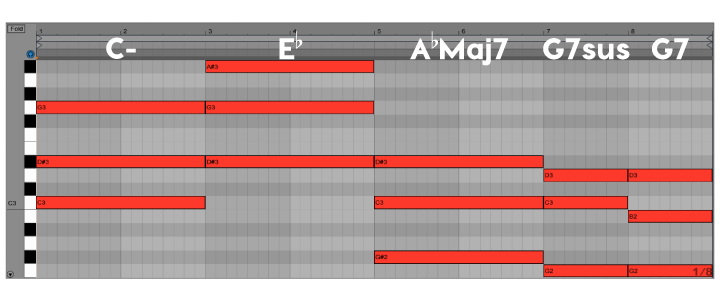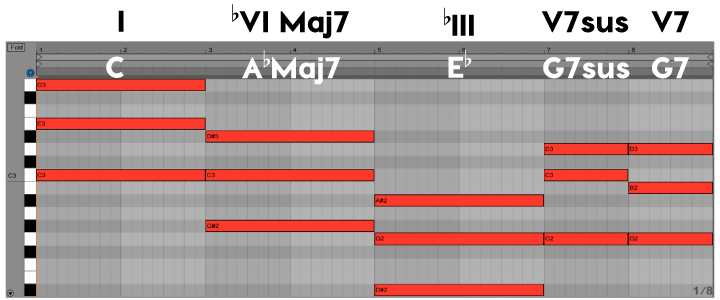+ The above video is taken from Soundfly’s course Unlocking the Emotional Power of Chords. Learn harmonic theory and maximize the emotional impact of your tracks.
When “Crazy” hit in 2006, it seemingly came out of nowhere.
CeeLo Green was known among hip-hop aficionados as a member of Goodie Mob. While the group had the heads’ respect, it didn’t always translate into big sales or exposure. Producer Danger Mouse was known as the guy who mashed up Jay Z’s Black Album with the Beatles’ White Album to produce the amazing Grey Album, one of mashup’s high-water marks. Like CeeLo, he had a devoted, but small, following.
The two paired up as a collaborative duo called Gnarls Barkley. All of a sudden, their shimmering hit track, “Crazy,” was inescapable. It was the rare song that utterly saturated pop culture just by virtue of its ridiculous greatness.
“Crazy” is based heavily on the song “Nel Cimitero Di Tucson” (published as “Last Man Standing” in English) by Gian Piero Reverberi and Gianfranco Reverberi from a 1968 Italian western called Django, Prepare a Coffin.
From it, Danger Mouse borrowed chord progressions, sections of the melody, the single-note guitar line that plucks out chord roots, and a general vibe of drama touched with desperation. The song has an unexpected happy ending, finishing on a major chord instead of the minor chord you’re expecting.
For such a world-swallowing hit, the production on “Crazy” is simple to the point of barely being there. There’s a “boots ‘n’ cats” drum pattern that sounds like the demo on an inexpensive drum machine which runs with zero variation for the entire song. The spaghetti western single-note guitar pattern spells out the chords. Samples of the strings and choir from “Last Man Standing” loop in the background. CeeLo sings the melody and does some more background “aahs” and “oohs.” He famously put down that lead vocal in one take. One take!
Tension in the Verse and Chorus
Though the track is simple, its harmony has some rich complexity to it. Given the simple arrangement, the harmony does a lot of the emotional heavy lifting (aside from CeeLo’s riveting vocal, of course). The basic mood is natural and harmonic minor, dark and tragic, but there a couple of major chords that break through like rays of sunshine through thunderclouds.
The verses and choruses use the same four-bar loop:

The C minor to E♭ is the minor going to its relative major. That’s the mirror image of the progression in “Send My Love” by Adele — sober and serious, lifting up to a moment of triumph.
The E♭ to A♭maj7 is a root move by a fifth, a very strong Western-classical feeling of resolution, acting like a V-I cadence in the key of A♭. It’s another little moment of triumph.
+ Learn more on Soundfly: Brush up on music theory fundamentals with our free Theory for Producers series of courses, and take your work to the next level with our month-long intensive course, Unlocking the Emotional Power of Chords.
With the move from A♭maj7 to G7, things suddenly get real. Those two chords are the subdominant and dominant chords in C minor, the standard classical-music tools for ramping up suspense before landing back on C minor. But forget about the context for a minute and just stay with the feeling of those two chords. Feel the tense rub between the adjacent semitones in the roots. They have an exotic, Middle Eastern feel. Also feel the light and airy major seventh change in relation to the no-nonsense dominant seventh.
To heighten the drama even more, we’re not even landing on plain G7, but rather G7sus. It holds back the actual G7 for two beats. “Suspension” (marked “sus”) is one of those rare musical terms that perfectly describes its emotional impact — pulling away temporarily from what’s coming or delaying gratification.
Finally, G7 resolves back to C minor, a regular, old classical V-i cadence. We’ve been trained our whole lives by Beethoven, et al., to hear this root move as inevitable.
Hope in the Bridge
But the bridge of “Crazy” is its big harmonic surprise:

Ending a minor-key passage on a major chord is one of the oldest tricks in the Western classical book. It’s called a Picardy third or Picardy cadence (which I imagine as something Captain Jean-Luc Picard likes to play on his flute).
C major to A♭maj7 is a pretty wonderful sound, worth spending some time getting to know. Combining a I chord from major with the ♭VImaj7 chord from a parallel natural minor is an infallible trick for giving your otherwise happy song a touch of sophisticated wistfulness, like Pharrell’s “Happy” or an uncountable number of Beatles songs. The C dropping a major third to A♭ feels like swooping down out of the sky on a giant eagle’s back.
The A♭maj7 moves to E♭ — not very dramatic. It feels like IV-I in E♭, kind of a rock cadence. It sounds fine. But it’s setting us up for the next real bit of harmonic drama: the E♭ to G7.
Here, the root moves up a major third, which is very much atypical in Western tonal music (and is rare in any kind of music). This root move is something you encounter in Wagner operas. Danger Mouse is using the same chords in this bridge as he does in the verses and choruses, just in a different order (and swapping C minor for C major). The new chord order creates root movement by major thirds, from C to A♭ and from E♭ to G. It’s a grand and epic feeling, what John Coltrane referred to as “giant steps.”
Gnarls Barkley managed to pack a tremendous amount of musical excitement into a seemingly small and simple container.
Enjoyed Ethan Hein’s breakdown of the emotional impact of the harmonic choices in “Crazy”?
You’re in luck! Ethan teaches Soundfly’s course Unlocking the Emotional Power of Chords. Sign up today to learn how a little theory can create enormous emotional pull in your productions.
Don’t stop here!
Continue learning with hundreds of lessons on songwriting, mixing, recording and production, composing, beat making, and more on Soundfly, with artist-led courses by Kimbra, Com Truise, Jlin, Ryan Lott, and the acclaimed Kiefer: Keys, Chords, & Beats.



